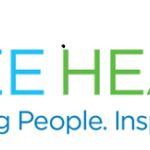 So often today we read press clippings from across the country on how the Department of Justice continues to crack down on health care fraud, be it in the criminal or civil arena. But this barrage of announcements, while impressive, evidences a disturbing trend that sizable providers, particularly managed care organizations, should take note of and address immediately, if they have not already. Indeed, DOJ almost always dedicates its full prosecutorial arsenal to combatting what it views as patent abuse of federal health care benefit programs, such as Medicare and Tricare. While this approach is well-intentioned and, at times, successful in terms of criminal convictions and dollars recovered, frequently absent is any desire by DOJ to assist sizable, private programs, who too, like their federal counterparts, are regularly victimized by creative scams, schemes and rackets. What can these organizations do to try and avoid this dilemma?
So often today we read press clippings from across the country on how the Department of Justice continues to crack down on health care fraud, be it in the criminal or civil arena. But this barrage of announcements, while impressive, evidences a disturbing trend that sizable providers, particularly managed care organizations, should take note of and address immediately, if they have not already. Indeed, DOJ almost always dedicates its full prosecutorial arsenal to combatting what it views as patent abuse of federal health care benefit programs, such as Medicare and Tricare. While this approach is well-intentioned and, at times, successful in terms of criminal convictions and dollars recovered, frequently absent is any desire by DOJ to assist sizable, private programs, who too, like their federal counterparts, are regularly victimized by creative scams, schemes and rackets. What can these organizations do to try and avoid this dilemma?
Going on the Offensive with Combatting Fraud
Be Proactive In Assessing Real Time Data – DOJ’s reigning practice to combat fraud typically begins with data analytics, but agents and attorneys normally view suspect data weeks, if not months (or years), after claims have been submitted and paid. Thus, they often are placed – through no fault of their own – in an unenviable position of addressing illicit conduct well after the fact. Private programs should enlist a similar approach to identify statistical anomalies, but with a greater emphasis on real time distillation. Simply put, the shorter the lag time between the actual activity in question and identification of that questionable activity, the greater the likelihood the activity can be addressed internally and referred externally for successful prosecution.
Be Focused and Creative with Data Mining – Most successful health care fraud prosecutions today center around statistical aberrations that, in the government’s view, cannot be explained but for the existence of fraud. As noted already, timely, internal identification of these deviations is essential, but even more crucial is discerning which deviations to highlight when, as a victim, reaching out to the government for assistance. To this point, the inexplicable fact (or “D-U-M dumb fraud” as I like to refer to it) is always your best friend because it is something any government investigator or attorney can appreciate, and, more importantly, it is something any potential juror (who is being lobbied by a government attorney) can appreciate. Start with a standard analysis of who and what falls well outside the bell curve, but strive to extend beyond that and creatively look for incomprehensible badges of fraud.
Encourage Equal Creativity By the Government – Again, if the victim of a scheme is not a federal health care benefit program, DOJ is statutorily de-incentivized to investigate and prosecute. Given this natural and consistent barrier, the focus of any discussion with the government should be on unique aggravating factors that necessitate a prosecution: atypical size of the fraud, duration of the fraud, presence of patient harm or abuse, presence of recidivist conduct, etc. The focus of the discussion should likewise be on facts that give rise to more than simply health care or AKS violations – look for facts that evidence wire, mail, or bank fraud, money laundering, aggravated identity theft, etc. The big picture – compelling, provable facts, coupled with legitimate charging options, make for an enticing government pitch.
























